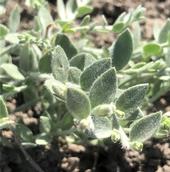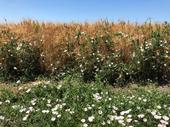- Author: Devii R. Rao
- Posted by: Gale Perez

From the Livestock and Range blog
Did you miss the Weed Management for Small Acreage Workshop? Don't worry! Here's the link to all the presentations: https://youtube.com/playlist?list=PLLjlfxpbNglYGn38KY94aoo6z3pLjo7E4.
Topics Included:
- Poisonous Plants
- Yellow Starthistle Control
- Herbicide Resistant Weeds
- Weed ID and Management 101
- Posted by: Gale Perez

Here's part 3 of our training videos: Weed Identification. We've broken it up into three smaller parts for easier viewing.
For more training videos, visit the...
- Author: Lynn M. Sosnoskie

There is still time to register for the April 11th SJV Weed Science Extension Day at the Westside Research and Extension Center in Five Points (17353 West Oakland Avenue, Five Points, CA 93624).
The meeting at the Westside Center will focus on agronomic crops, ROWs, and tree and vine systems. The session will also include hands-on weed ID and nozzle selection/drift management training.
The meeting has been approved for 3.5 CDPR continuing education credits (other).
These presentations are free to attend although we do request that you register by calling the UCCE Merced County office at 209-385-7403 to reserve...
- Author: Lynn M. Sosnoskie

There are TWO upcoming weed science extension days in the San Joaquin Valley this April.
The first will be held on the 2nd of April at the Kearney Agricultural Research and Extension Center in Parlier (9240 South Riverbend Road, Parlier CA 93648) and the second will be held on April 11th at the Westside Research and Extension Center in Five Points (17353 West Oakland Avenue, Five Points, CA 93624).
The meeting at the Kearney Center will focus on rangeland, turf, and tree and vine systems while the meeting at the Westside Center will focus on agronomic crops, ROWs, and tree and vine systems. Both meetings will open with hands-on weed ID and nozzle...
- Author: Lynn M. Sosnoskie

You just KNOW that some plants are considered weeds. Their common names give them away. They sound awful. Giant hogweed (Heracleum mantegazzianum). Ripgut brome (Bromus diandrus). Devil's claw (Proboscidea lutea). Smellmelon (Cucumis melo). Itchgrass (Rottboellia cochinchinensis). Dog-strangling vine (Cyanthum rossicum).
Others...well, others seem more benign. Even sweet. For Valentine's day I present to you nine weedy plants with lovely names. Enjoy...
1. Tree-of-Heaven (Ailanthus altissima). How celestial (Sigh...). How divine (Sigh...). How invasive (sigh...wait, what?). Tree-of-heaven is a deciduous tree, native...


